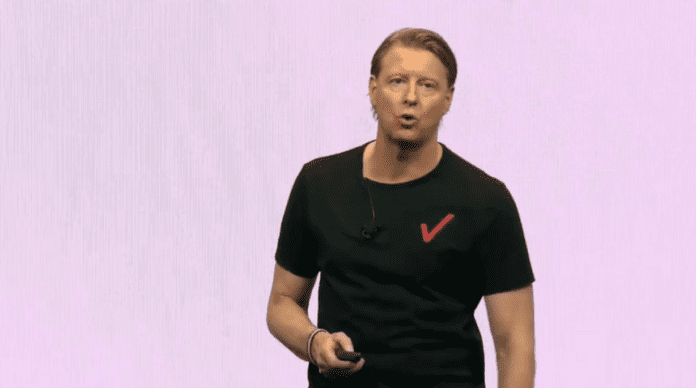CEO says dynamic spectrum sharing coming in 2020
The current focus in the U.S. is on deploying 5G in millimeter wave frequencies, but the longer-term strategy is to use a mix of low-, mid- and high-band to balance coverage and capacity. In the past, this would require a multi-year spectrum re-farming process but, beginning next year, Verizon CEO Hans Vestberg says software-based dynamic spectrum sharing will hit the market and shift that paradigm.
Speaking this week on a quarterly earnings call, Vestberg said dynamic spectrum sharing is “an important piece” of 5G. “Ultimately, 5G is going to be on all bands. And I have a high confidence that my team is going to be doing that well, continue to have the leadership in the market when it comes to network performance. There might also come up opportunities all the time where it could be added spectrum. But right now, to launch both capacity and coverage, we feel confident on the assets we have.”
Qualcomm’s Dean Brenner, vice president of spectrum strategy and technology policy, explained dynamic spectrum sharing in a recent interview with VentureBeat. He said, once handset and basestation support is in place, 5G and LTE will be able to operate in the same band at the same time. “Why is that a huge game changer? Well, we’ve now taken the process, that re-farming process that typically could take 10 years, and we’re enabling it overnight.”
On July 31, Verizon announced it has activated its millimeter wave-based “5G Ultra Wideband” mobile service in parts of Atlanta, Detroit, Indianapolis and Washington D.C. These four cities join Chicago, Denver, Minneapolis, Providence and St. Paul as nine of the target 30 5G markets the carrier is working to bring live by the end of the year.
While the operator hasn’t provided coverage maps like Sprint and T-Mobile US has, Vestberg said the 5G network footprint in some cities has “doubled…since we launched the markets, and that’s the pace we’re onto.”
On the fiber side, Vestberg said Verizon averaged 1,400 route miles deployed per month in the second quarter, up from about 1,000 route miles per month in the first quarter.
“Right now, the majority of the fiber is going to our own sites…But over time, of course, when we roll in later in part of this year, next year, we’re also going to be able to offer that to our enterprise customers and wholesale, etc. So that’s how we’re working right now, and we’re building it in 60 markets because it is just so essential for the whole Intelligent Edge Network. It’s so essential for the whole 5G play that we have to have this fiber.”

